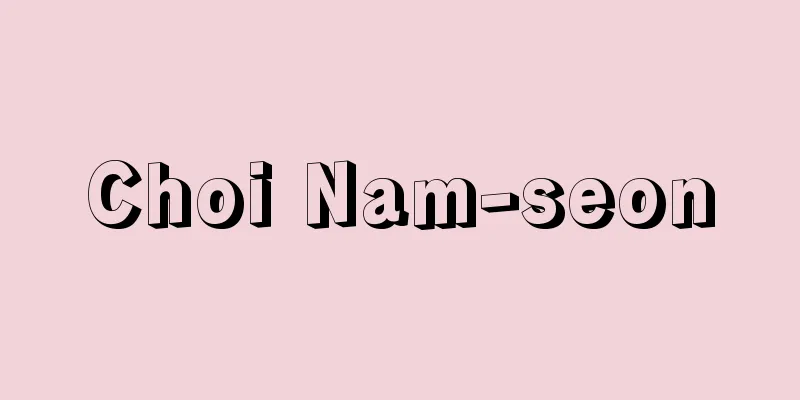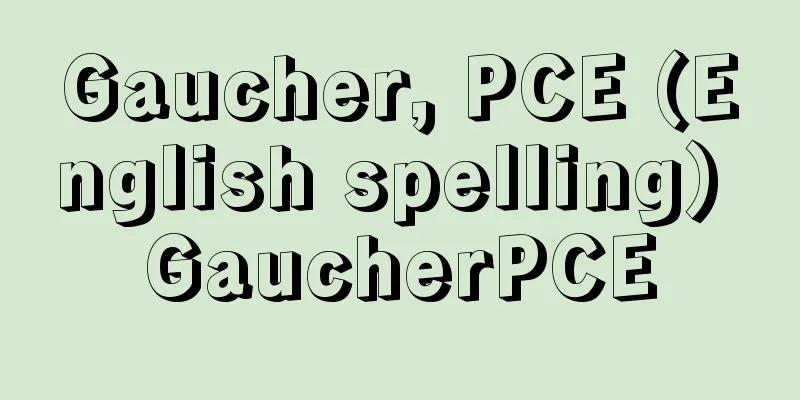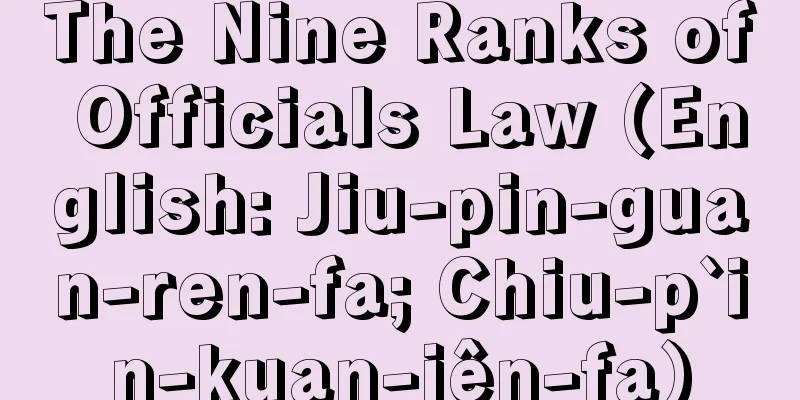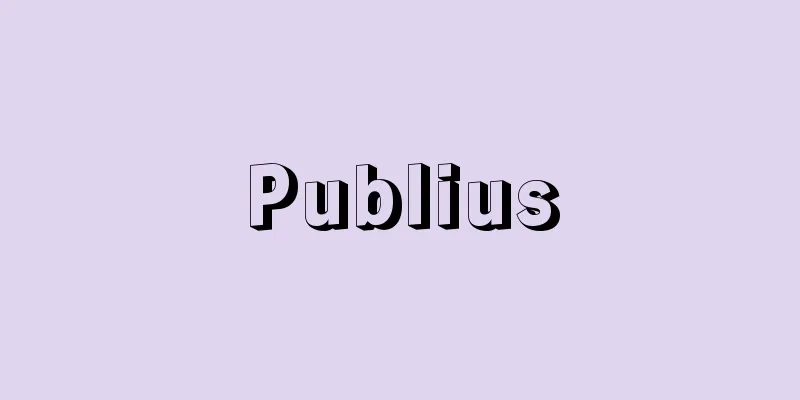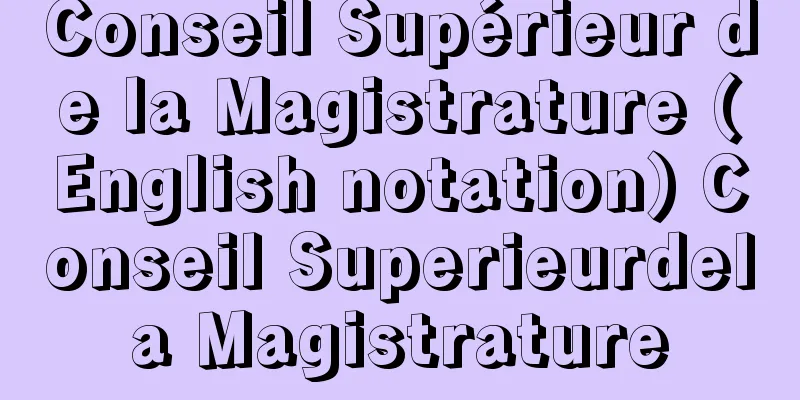Genjo Noro - Genjo Noro

|
Year of death: July 6, 1761 (August 6, 1761) Year of birth: December 20, 6th year of Genroku (January 15, 1694) A doctor, herbalist, and Dutch scholar in the mid-Edo period. Born in Sewa Village, Taki County, Ise Province (Mie Prefecture). His childhood name was Genji, given name Saneo, his place of residence was Genjo, and his pen name was Renzan. He was the second son of Takahashi Shigehide, but in 1712 he was adopted by Noro Saneo (Sansei). In the same year he went to Kyoto, where he studied medicine under Yamawaki Michitatsu (Genshu), Confucianism under Namikawa Tenmin, and herbalism under Inou Wakamizu. In 1719 he was ordered by the shogunate to travel to the capital to collect medicines, and traveled around the country with the official physician Niwa Masataka to collect medicines. In the same year he was bestowed a mansion. In 1739 he was given an audience with the shogun, and in 1747 he became a member of the Toshiyori family. In 1716 he was ordered by the shogun Tokugawa Yoshimune to begin studying Dutch with Aoki Konyo. Every spring, when the chief of the Dutch trading post and his party visited Edo, he visited Nagasakiya, their regular lodging, and received instruction through an interpreter. He questioned the contents of Dodoneus's Herbarium and Johnston's Illustrated Animals, and wrote one volume, "Illustrations of Dutch Birds, Beasts, Insects, and Fish," one volume, "The Xinyou Dutch Herbalism: A Treatise on the Official Use," and eight volumes, "The Dutch Herbalism." This work took ten years, from 1741 to 1750. Together with Aoki Konyo, an early Dutch scholar, he was a pioneer in the deciphering of Dutch books and the acceptance of Western pharmacopoeia, and built the foundation for the rise of Dutch studies. He is grave at Sengaku-ji Temple (Minato Ward, Tokyo). His writings include "Korean Pen-Talk," a medical dialogue with Korean envoys who came to Japan in 1771, "How to Treat Mad Dog Bites," "The Buddha's Foot Stone Monument and Records," "Records of Hot Springs at Mt. Myoko," "Hokuriku Homonbutsu (Herbal Medicine for Famine Relief)," "Records of Mountain Plants," and "Hokuriku Homono (Hokuriku Practical Guides)." (Atsuko Yoshida) Source: Asahi Japanese Historical Biography: Asahi Shimbun Publications Inc. About Asahi Japanese Historical Biography |
|
没年:宝暦11.7.6(1761.8.6) 生年:元禄6.12.20(1694.1.15) 江戸中期の医者,本草学者,蘭学者。伊勢国(三重県)多気郡勢和村の生まれ。幼名は源次,名は実夫,元丈は字,号は連山。高橋重英の次男であるが,正徳2(1712)年野呂実雄(三省)の養子となった。同年京都に出て,医学を山脇道立(玄修)に,儒学を並河天民に,本草学を稲生若水に学んだ。享保4(1719)年幕府より採薬御用の命で出府し,官医丹羽正伯と共に諸国に採薬した。同9年屋敷を拝領。元文4(1739)年御目見医師,延享4(1747)年寄合医師となった。 元文5年将軍徳川吉宗から命を受けて青木昆陽と共にオランダ語の学習を開始。毎春のオランダ商館長一行の江戸参府時に定宿の長崎屋を訪問し,通詞を介して教示を受けた。ドドネウス『草木誌』,ヨンストン『動物図説』の内容を質疑し,『阿蘭陀禽獣虫魚図和解』1冊,『辛酉阿蘭陀本草之内御用ニ付承合候和解』1冊,『阿蘭陀本草和解』8冊を著した。実に寛保1(1741)年から寛延3(1750)年におよぶ10年がかりの仕事であった。草創期の蘭学者青木昆陽と共にオランダ書籍解読および西洋本草学受容の先駆けとなり,蘭学興隆の基礎を築いた人であった。墓は泉岳寺(東京都港区)。著書に寛延1年来聘の朝鮮通信使との医事問答『朝鮮筆談』,『狂犬咬傷治方』『仏足石碑并記』『妙高山温泉記』『救荒本草並野譜』『連山草木志』『北陸方物』などがある。<参考文献>大西源一『野呂元丈伝』 (吉田厚子) 出典 朝日日本歴史人物事典:(株)朝日新聞出版朝日日本歴史人物事典について 情報 |
Recommend
Shuzo Takiguchi
Poet and art critic. Born in Toyama Prefecture. St...
Sanbai
〘 noun 〙 (It is said that this is a further variat...
Continental Blockade (English: Blocus continental, French)
A policy that Napoleon I issued to European count...
Arsenic oxide (arsenic oxide)
A general term for oxides of arsenic. Diarsenic tr...
Kibi dango - Kibi dango
A specialty dumpling of Okayama. It is also writt...
Aloe arborescens
…It is a general term for the succulent plant gen...
Unfair trade restrictions
One of the types of conduct that the Antimonopoly ...
Body lice - Body lice
...Hosts are animals of the even-toed ungulate fa...
Venusti, M. (English spelling)
...However, this was only in Rome; in Florence, s...
The Record of Plays - Kezairoku
A document on Kabuki. Written by Nyugatei Ganyu. ...
"Are your teeth white? Then laugh." - If yours are white, then laugh.
…In “The Song of Oshol” (1970), the husband tries...
Echizen Torinoko Paper - Echizen Torinoko Paper
…The main production areas are Echizen (Takefu an...
Waist nipper
Waist nipper is a type of underwear for women that...
Gien
...He took on Zeami's nickname Saburo, and wa...
Nikolaevsk
...It is located on the left bank of the Tobol Ri...
